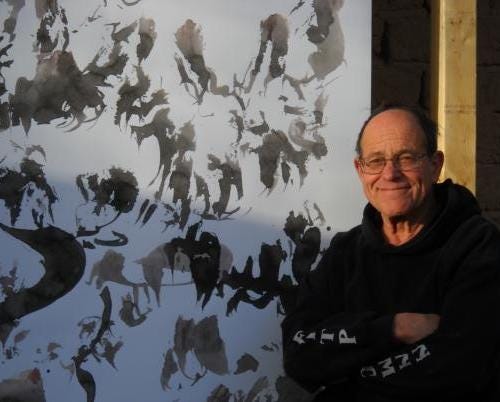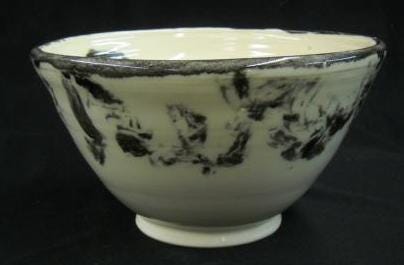Seeing the small things that shape our What’s Next
A few weeks ago, Sheila and I were in Taos for the memorial service for her brother, Miles. When he died in August, we’d had the chance to spend time with him and in his pottery studio, his professional home for more than fifty years. The place was exactly what you imagine a potter’s studio to be: wheels of different sizes, kilns tucked into corners, glaze tests everywhere, and his periodic table of chemical elements mounted to the wall like a well-worn map he knew by heart. Miles worked in the tradition of Edo-Japanese potters and reflected his respect for natural materials and the imperfections that come out of all our
Miles was a true artist, resourceful, experimental, and deeply connected to the natural world. One of my favorite stories was from 1980, when Mount St. Helens erupted and Seattle was blanketed in ash. Most people complained. Miles grabbed a handful of buckets and headed outside. If the earth was offering free material, he figured he should use it. And he did. Throughout the studio were vases, plates, and cups glazed with the remnants of that explosion. I always thought of them as The Mount St. Helens Collection.
We scheduled the memorial during the annual Dixon Studio Tour, which has been running for over forty years, and which Miles had been part of for more than twenty. The organizers were glad to include his studio as a tribute. Family and friends showed up to help, cleaning shelves, prepping parking, and cooking meals. My friend Christine and I were tasked with creating a video of Miles’ work. It was a perfect assignment for me: I got to learn some movie-making skills from Christine and, at the same time, get to know Miles in a different way.
He left behind hours of video, much of it on old hard drives. I was hoping to find one clean start-to-finish demonstration of his process—no such luck. But as I watched the recordings, a theme started to emerge. Miles had an idea for a film he wanted to make called “How to Be a Potter.” Not how to throw clay, shape a form, or fire a kiln—but what it means emotionally. The frustrations, the small joys, and especially the sparks of inspiration that keep an artist going.
As we sifted through clips, we found the highlights you’d expect: a raku vase pulled hot from the kiln, a ceramic wall hanging being prepped for firing, glaze experiments that looked like alchemy. But what really stood out were the quieter moments he captured, hummingbirds darting around his feeders, the sun sliding across the desert hills, and the way he would sit and read poetry.

In one video, Miles is in his living room, animatedly reading a poem by the 13th-century Persian poet Rumi. He reads like a performer, hoping to draw his audience into the message. Listening to him, I realized the whole weekend carried the same theme. Pottery, poetry, grief, the studio tour, they were all pointing to the same idea:
We must work with what life hands us.
Not always what we ask for, not always what we plan for—but what is there in front of us.
And there was another moment that made this even clearer. Our son-in-law Bill called Miles’ daughter Heather and told her that whenever he picks up one of Miles’ pots, he notices “every single one has his handprints on it.” He was right. You could see the small ridges where Miles’ fingers shaped the clay, the slight imperfections that made each piece unmistakably his. It reminded me that we’re all doing some version of that, leaving our own fingerprints on the work of our lives, whether we realize it or not.
To me, that’s the heart of “What’s Next.” Not reinventing ourselves from scratch but paying attention to what’s already here and deciding what we want to make from it. Miles didn’t force anything. He used whatever showed up, volcanic ash, unpredictable results, failure and quiet moments, to find a way to turn it into something meaningful.


As I think about what’s next, for myself and for the people I work with, I keep coming back to that image of Miles in his studio letting the clay tell him what it wanted to become. There’s a gentler way to move forward when we stop forcing outcomes and start listening to what’s already here. The next chapter usually isn’t waiting out in the distance. More often, it’s sitting right in front of us, ready to be shaped.
And if you want to get a sense of the spirit behind all this, you can watch Miles reading that Rumi poem and go to minute 36:50.
What’s the clay on your wheel these days? Share it in the comments so we can learn from each other
